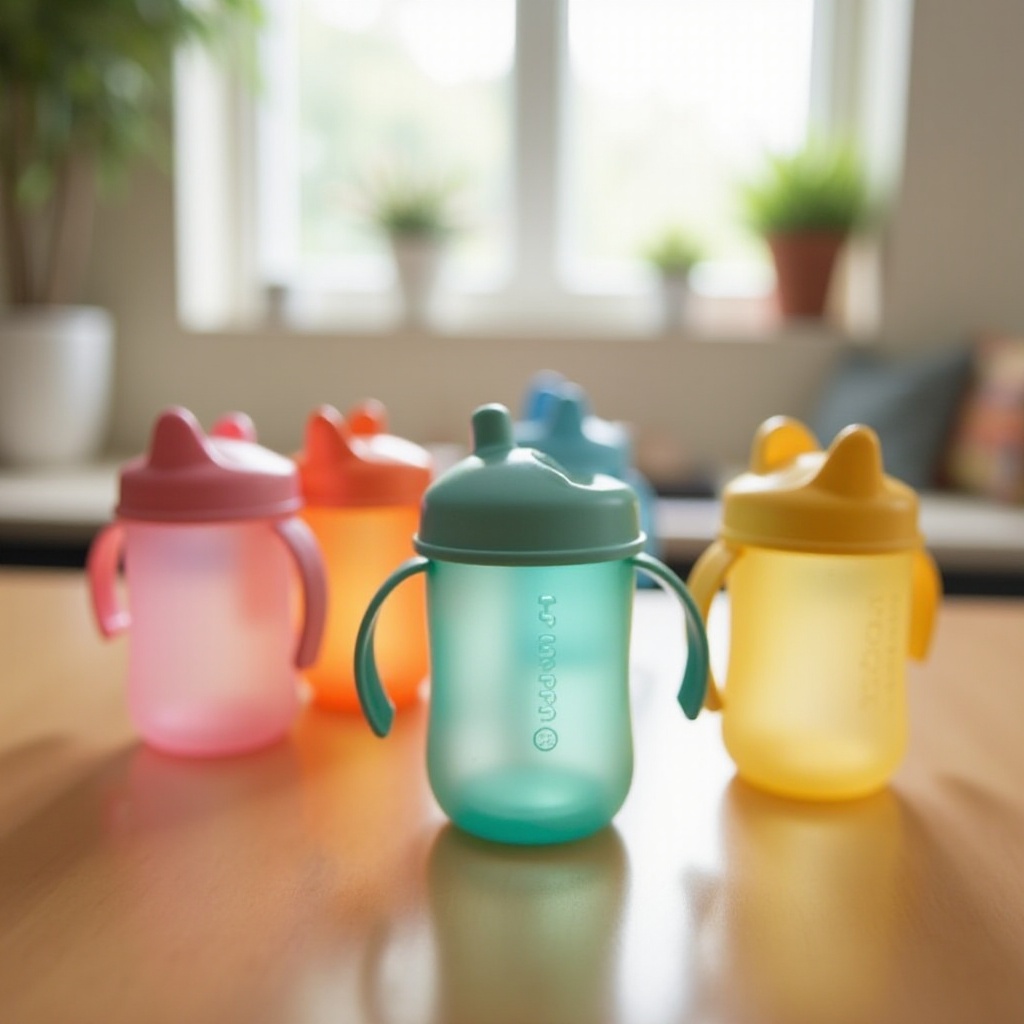Introduction
Introducing a sippy cup to your child’s routine marks an exciting milestone in their journey towards independence. As children grow, transitioning from a bottle or breastfeeding to a sippy cup aids in developing their coordination and promotes self-feeding. A sippy cup offers convenience by minimizing spills while allowing children to engage actively in the process of drinking. This comprehensive guide will help you navigate this transition with ease and confidence, providing strategies and solutions for a smoother experience.

When to Introduce a Sippy Cup
Timing plays a crucial role in the successful introduction of a sippy cup. Most experts recommend initiating this transition between six months and one year. Observing your child’s developmental milestones will help determine readiness. Signs your child may be ready include being able to sit up without support, showing interest in what others are drinking, and proficiently handling food or liquids from a spoon.
Transitioning to the next stage involves understanding the nuances of sippy cup introductions. Recognizing your child’s readiness can significantly impact their acceptance and adaptability to this new form of drinking, setting a positive tone for the subsequent transitions they will face.
Choosing the Right Sippy Cup for Your Child
Selecting a suitable sippy cup for your child is paramount in ensuring a smooth transition. With various types available, each offers distinct advantages depending on your child’s preference.
- Spout Cups: Ideal for beginners, offering a familiar transition with a soft spout that mimics a bottle’s texture.
- Straw Cups: Suitable for children comfortable with sucking actions, facilitating easy drinking.
- 360-Degree Cups: Allow drinking from any side, closely resembling the experience of drinking from a regular cup.
Material also plays a vital role; opt for BPA-free cups to ensure safety, and prioritize easy-to-clean designs. A well-chosen cup accommodates your child’s specific needs, enhancing their comfort and willingness to adapt.

Step-by-Step Guide to Introducing a Sippy Cup
Introducing a sippy cup can be straightforward with structured approaches that encourage acceptance:
-
Begin with Familiar Liquids: Start with liquids your child already enjoys, such as water, breast milk, or formula. This familiarity eases the transition.
-
Integrate Regularly into Mealtimes: Consistency is key. Incorporate the sippy cup into daily meal routines to normalize its presence.
-
Model Usage: Children learn through imitation. Demonstrating how to hold and use the sippy cup can inspire your child to replicate your actions.
-
Positive Reinforcement: Praise your child for every attempt, reinforcing their efforts and progress.
Following these structured steps promotes a nurturing environment conducive to adaptation, ensuring your child feels supported throughout the transition.
Encouraging Your Child to Use the Sippy Cup
Encouragement combined with engagement techniques ensures your child embraces the sippy cup as part of their routine. Here are strategies to facilitate this process:
- Keep the sippy cup within reach so your child can explore it at their convenience.
- Offer enthusiastic praise to acknowledge and reinforce positive attempts.
- Introduce playful activities involving the sippy cup, blending fun with functionality to boost acceptance.
Creating a positive atmosphere encourages consistent usage while fostering essential developmental skills.
Overcoming Common Challenges
Despite careful planning, introducing a sippy cup might present challenges such as resistance or spillage. Addressing these promptly makes the transition smoother:
-
Resistance: Avoid forcing the transition. Allow your child time to adjust, offering the sippy cup without pressure. If reluctance persists, give them a break and reintroduce it later.
-
Spillage: Choose spill-resistant designs to minimize mess, and provide opportunities for practice in a controlled environment, helping your child develop necessary motor skills.
Acknowledging these challenges and employing targeted solutions will assist in overcoming obstacles, paving the way for your child’s successful transition to independent drinking.

Conclusion
Introducing a sippy cup involves a blend of understanding timing, selecting an appropriate cup, providing encouragement, and acknowledging common challenges. This milestone marks a step towards independence, underscoring the evolving nature of your child’s developmental journey. While the process might present initial hurdles, each small victory contributes to significant growth in self-reliance and confidence. Celebrate these achievements and embrace the changes that come along the way, knowing you are supporting your child’s strides toward autonomy.
Frequently Asked Questions
What is the best age to introduce a sippy cup?
Experts suggest introducing a sippy cup between six months and one year, adjusting based on your child’s readiness.
How do I transition my baby from bottle to sippy cup?
Begin by using familiar liquids, integrate the cup into regular mealtimes, model its use, and reinforce efforts positively.
What should I do if my child refuses the sippy cup?
Introduce the sippy cup without pressure, using praise and exploration time. Take breaks if needed and reintroduce later.

0 Comments